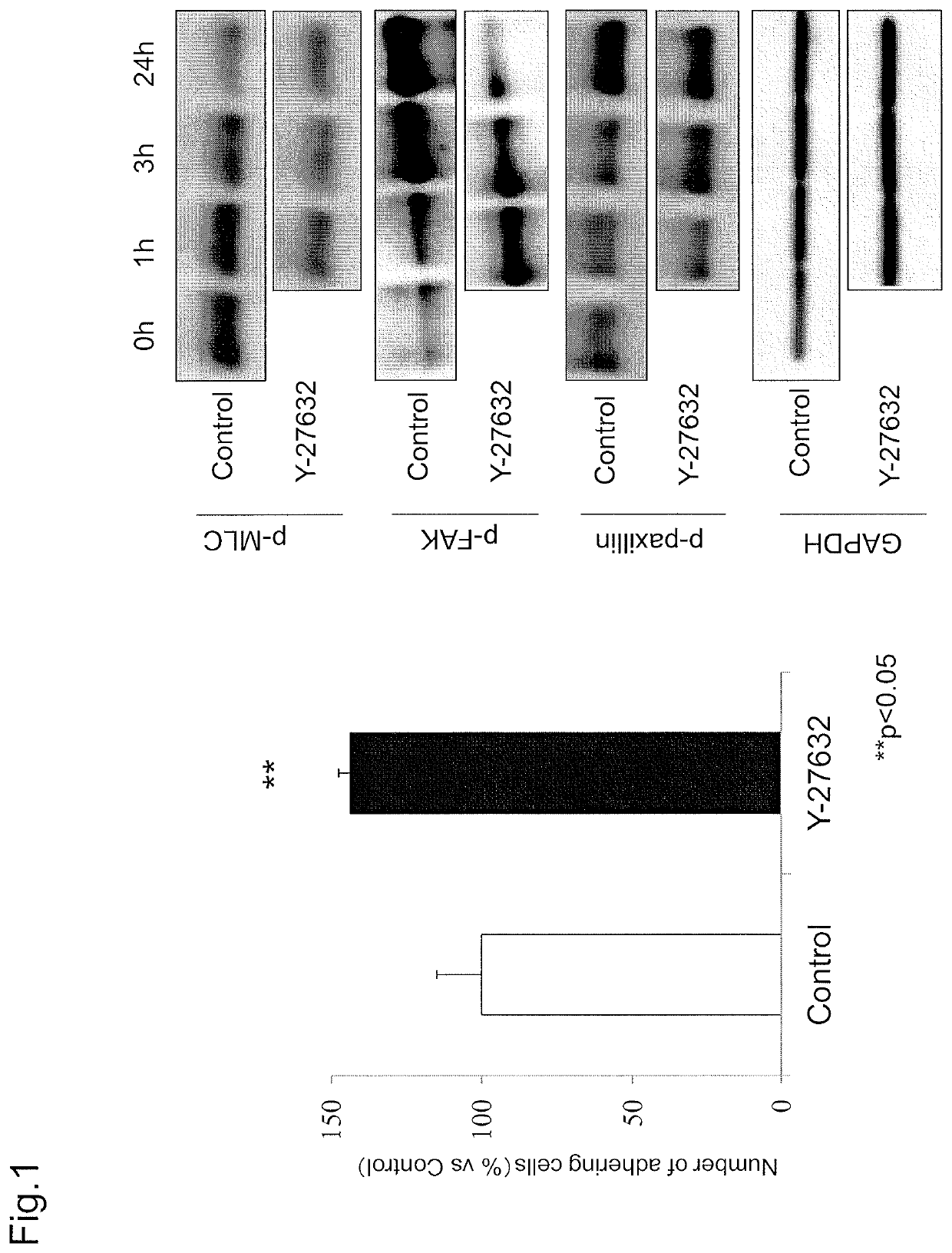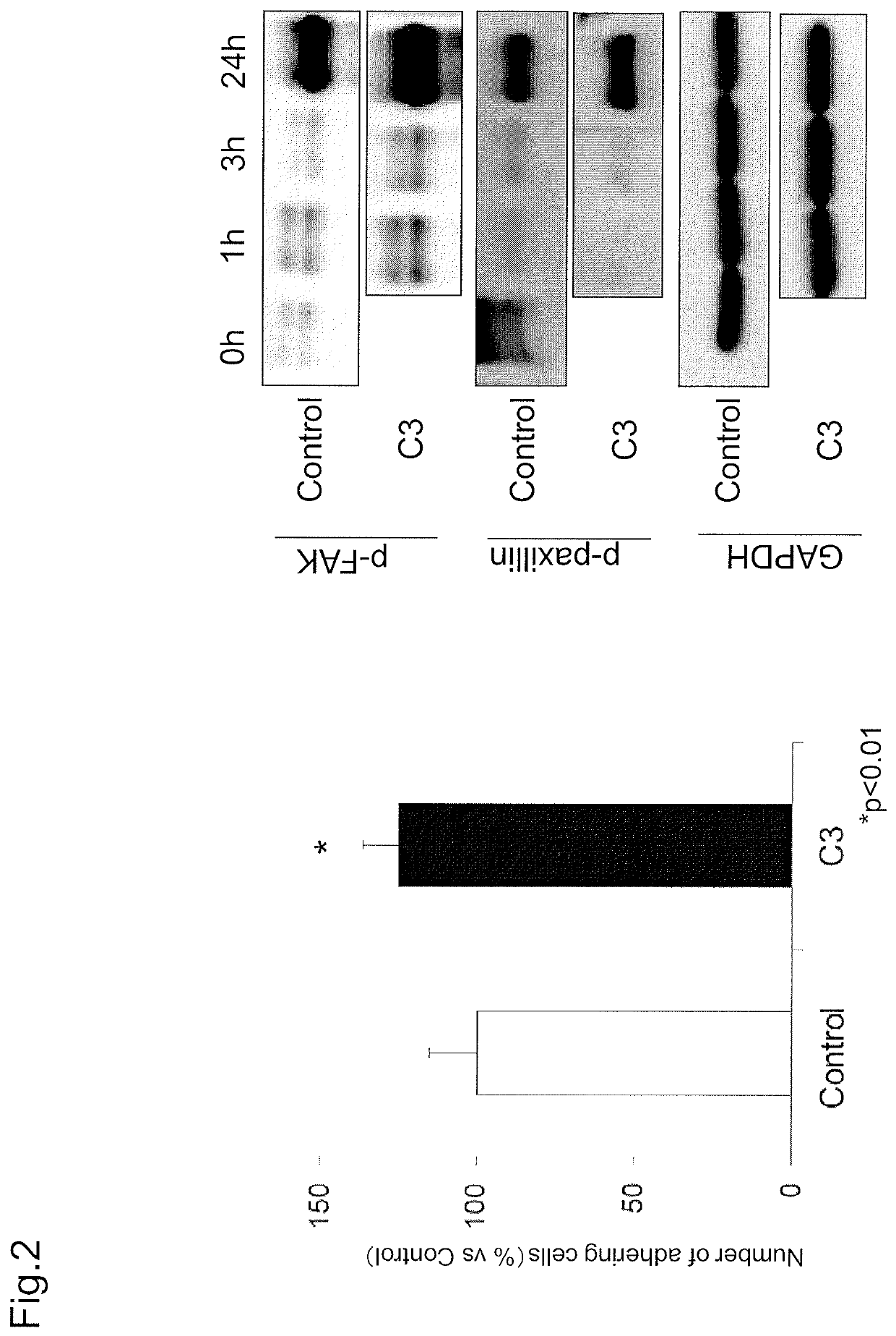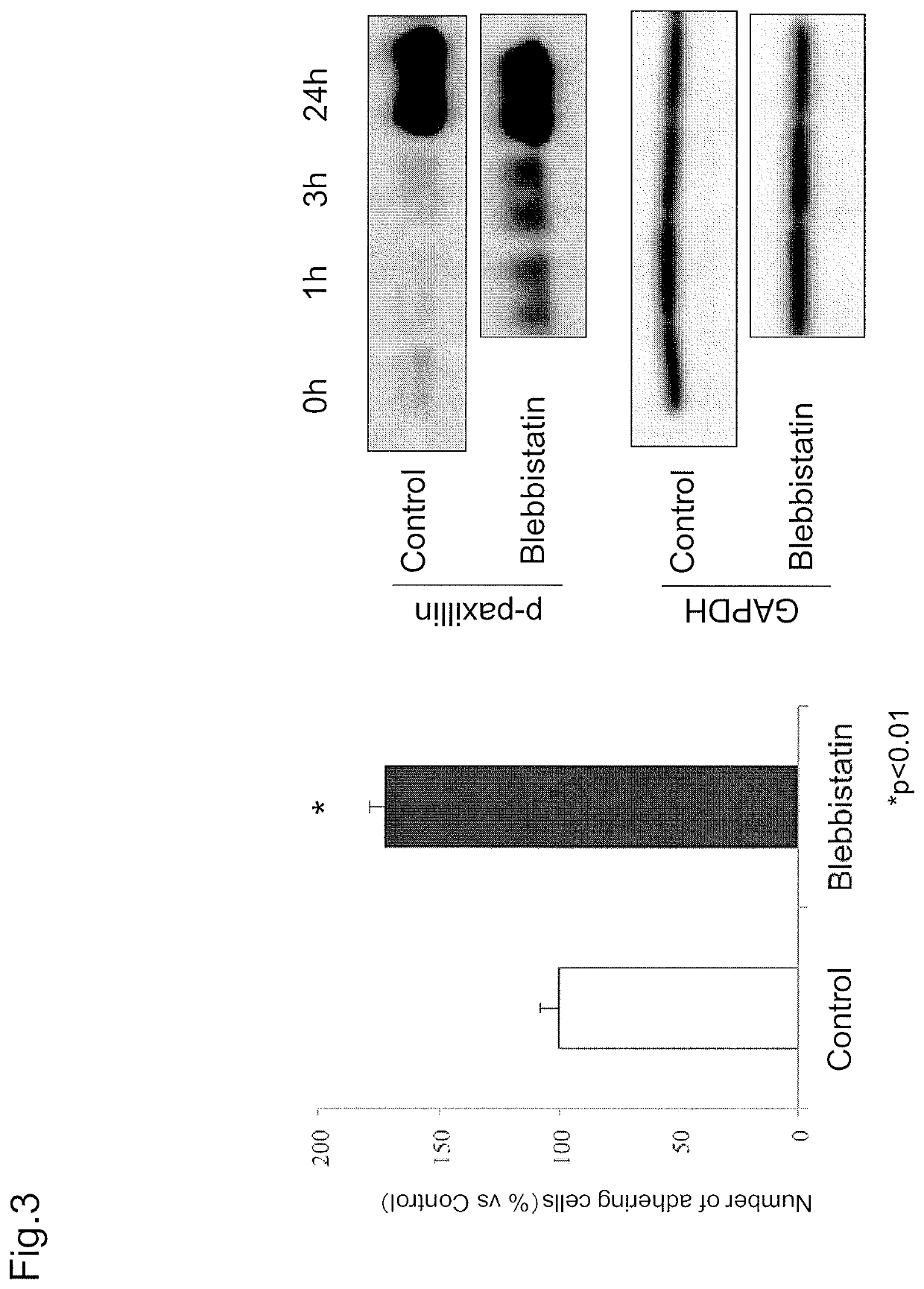Combined agent for cell therapy of corneal endothelial cell
a corneal endothelial cell and cell therapy technology, which is applied in the direction of medical preparations, pharmaceutical delivery mechanisms, unknown materials, etc., can solve the problems of hypertrophy of the corneal guttae and descemet's membrane, corneal endothelial cells have very limited regeneration ability, and the corneal endothelial cells have very limited ability to regenerate, so as to improve the establishment of the transplantation of the corneal endothelial cells, the effect of effectiv
- Summary
- Abstract
- Description
- Claims
- Application Information
AI Technical Summary
Benefits of technology
Problems solved by technology
Method used
Image
Examples
reference example 1
Examination of Cell Adhesion Due to ROCK Inhibitor and Effect Thereof on Adhesion-Related Molecule
[0129]Reference Example 1 added a ROCK inhibitor to study the effect on cell adhesion due to inhibiting the Rho-ROCK pathway.
[0130](Materials and Methods)
[0131](Corneal Tissue)
[0132]All monkey corneal tissues used in this experiment were corneas of a cynomolgus monkey euthanized for other research purposes (Nissei Bilis Co., Ltd., Ohtsu, Japan, or Keari Co., Ltd., Wakayama, Japan). All corneas were preserved at 4° C. in a preservation medium (Optisol; Chiron Vision Corporation, Irvine, Calif.).
[0133](Cell Culture)
[0134]In primary culture of monkey corneal endothelial cells, a Descemet's membrane including an endothelial cell layer was detached from a corneal tissue, and placed in 2 mg / ml Collagenase A (catalog No.: 70164923; Roche Applied Science, Penzberg, Germany) dissolved in DMEM (Gibco-Invitrogen) and incubated at 37° C. After 12 hours, the sample was centrifuged at 1000 rpm for 5 ...
reference example 2
Examination of Cell Adhesion Due to RhoA Inhibitor and Effect Thereof on Adhesion-Related Molecule
[0143]Reference Example 2 used a RhoA inhibitor (botulinum C3 enzyme) to study the effect on cell adhesion.
[0144](Materials and Methods)
[0145]In short, cell adhesion due to RhoA inhibitor was examined by assessing the number of adhering cells with CellTiter-Glo®. Further, the activity of adhesion-related molecules after the addition of a RhoA inhibitor was measured by Western blot.
[0146](Examination of Number of Adhering Cells).
[0147]The number of adhering cells was analyzed by using CellTiter-Glo®. First, cultured monkey corneal endothelial cells were seeded onto a 96 well plate at 5000 cells / well in DMEM (Gibco-Invitrogen) to which C3 botulinum toxin (CALBIOCHEM, catalog number: 341208) was added such that the final concentration would be 300 ng / ml. DMEM (Gibco-Invitrogen) was used as a control. The cells were washed with PBS(−) after three hours from seeding. PBS(−) was removed by ta...
example 1
Examination of Cell Adhesion Due to MLC Phosphorylation Inhibitor
[0152]The present Example examined the involvement of MLC, which is downstream of a Rho-ROCK pathway and phosphorylated by the activation thereof, in cell adhesion.
[0153](Materials and Method)
[0154]In short, cell adhesion due to a p-MLC inhibitor was examined by assessing the number of adhering cells with CellTiter-Glo®. Further, the activity of adhesion-related molecules after the addition of an RhoA inhibitor was measured by Western blot.
[0155](Examination of Number of Adhering Cells).
[0156]The number of adhering cells was analyzed by using CellTiter-Glo®. First, cultured monkey corneal endothelial cells were seeded onto a 96 well plate at 5000 cells / well in DMEM (Gibco-Invitrogen) to which blebbistatin (MILLIPORE, catalog number: 203391) was added such that the final concentration would be 100 μM. DMEM (Gibco-Invitrogen) was used as a control. The cells were washed with PBS(−) after three hours from seeding. PBS(−) ...
PUM
| Property | Measurement | Unit |
|---|---|---|
| time | aaaaa | aaaaa |
| temperature | aaaaa | aaaaa |
| temperature | aaaaa | aaaaa |
Abstract
Description
Claims
Application Information
 Login to View More
Login to View More - R&D
- Intellectual Property
- Life Sciences
- Materials
- Tech Scout
- Unparalleled Data Quality
- Higher Quality Content
- 60% Fewer Hallucinations
Browse by: Latest US Patents, China's latest patents, Technical Efficacy Thesaurus, Application Domain, Technology Topic, Popular Technical Reports.
© 2025 PatSnap. All rights reserved.Legal|Privacy policy|Modern Slavery Act Transparency Statement|Sitemap|About US| Contact US: help@patsnap.com



